The following is my personal collection of the butterflies I’ve seen and photographed to date in the provinces of Cadíz, neighbouring Malaga and Gibraltar; I will update the list as my collection grows and/or I take better pictures. All of the photographs used are my own and I have added the months and locations in which I took them. If anyone spots a mis-identification or can help id those I cannot, please let me know.
I have listed the butterflies by the families they belong to. I haven’t gone into elaborate detail on the written descriptions as I’m sure most people who have a deeper level of interest would rather read it in a book written by someone who is an expert on their subject. I have concentrated instead in providing clear, good-sized pictures and on presenting the overall impressions and names of the butterflies. I have named LHPs (larval host plants) where possible, as their presence is often a good indication of where you may find the adult insects and in some cases may aid identification, (provided you recognise the plants of course.)
I have recorded my own observations on behaviour, appearance etc., but much of the information, especially with regard to distribution etc. is taken from my current butterfly ‘bible’, the Photographic Guide to the Butterflies of Britain & Europe by Tom Tolman. I have also found my ‘pocket’ Collins guide, Butterflies and Moths of Britain & Europe by H.Hofmann & T.Marktanner very handy too as it has good clear photographs.
Abbreviations used: LHP(s) – larval host plant(s); fw- fore-wing;unf- fore-wing underside;upf -fore-wing upperside; hw -hind-wing; uph -hind wing upperside; uhw -underside hind-wing; ups – fore-wing & hind-wing upper sides gc – ground colour
________________________________________________________
Papilionidae
A small group of large, distinctive and colourful butterflies that includes the Swallowtails.
_______________________________________________________
SWALLOWTAIL – Papilio machaon
Found throughout Europe and most Mediterranean Islands, but absent from Atlantic Islands.
A beautiful and very distinctive butterfly with a fast and powerful flight.
Flight period: February to October
Habitat: Found in hot, dry places and often in areas of cultivation. LHPs include many species of Umbellifer and Rue
________________________________________________________
SPANISH SWALLOWTAIL – Iphiclides feisthamelii
The long tail streamers and general overall appearance are very distinctive and these large graceful butterflies often hover and glide, appearing to exploit air currents to aid flight. The large ‘ocilli’, or eyes, at the tail end of the insect are a defence marking – to deflect an attack by a predator from its more vital parts. I always think it sort of makes the butterfly look like it’s flying backwards
Flight period: February to October
Found in similar areas to Swallowtail, in hot and very dry shrubby places, around woodland margins and orchards. Adults are greatly attracted to nectar-rich shrubs and trees.
* This butterfly looks similar to a Scarce Swallowtail Iphiclides podalirius, but according to Tristan Lanfranchis’s book on Butterflies of Europe the Scarce Swallowtail is not found in Southern Spain, but rather it is the Spanish Swallowtail Iphiclides feisthamelii.
________________________________________________________
SPANISH FESTOON – Zerynthia rumina
Found only in Iberia and parts of France.
Description & variation: Resembles Z. polyxena (Southern Festoon). All red markings are better developed but variable. Males and females are generally alike but females sometimes have an darker, more-ochre yellow ground colour.
Flight period:Generally late March to May in one prolonged brood, but records span February-October, indicating a second brood in Spain.
Habitat: Wide-ranging: hot, dry rocky and scrubby places, cultivated areas, flowery meadows, woodland edges. LHPs are members of the birthwort family.
__________________________________________________
Pieridae
This family contains several of the more common and easily recognised butterflies, and migrants such as the Bath White, Small White and Clouded Yellow. Without exception the European examples of this family never sit with fully open wings: most species rest with partially open or half-opened wings, whilst the ‘brimstones’, ‘clouded yellows’ and ‘wood-whites’ only very rarely, if ever, open their wings at rest.
Whites
Large White Pieris brassica; Small White Pieris rapae; Green Striped White Euchloe belemia; Black-veined White-Aporia crataegi; Moroccan Orange Tip Anthocharis cardamines
________________________________________________________
BLACK-VEINED WHITE – Aporia crataegi
A distinctive and elegant butterfly whose black veining puts me in mind of leaded windows.
Habitat: Warm, sunny bushy places & cultivated areas, esp. orchards. LHPs are Hawthorn (Crataegus monogyna), cultivated trees of the plum family, almond, apple, pear, peach & apricot.
Behaviour: Quite a restless butterfly, difficult to catch still for long enough to photograph very often! Adults are strongly attracted to the nectar of more robust plants such as knapweeds and thistles.
Found throughout most of Europe, absent from the Balearics. Widespread & generally common, thus far I have only seen it in the mountains; Gaucin & Sierra de las Nieves.
___________________________________________________
LARGE WHITE – Pieris brassicae
Easily recognised, the butterfly is widespread and numerous and found throughout Europe. Commonly known as the Cabbage White.
Flight period: February to November
Habitat:Most habitat types where LHPs are found, including gardens.LHPs include several members of the cabbage family (brassicaceae) and they may become garden pests on both cabbages and garden nasturtiums.
Behaviour: A powerful migrant and vagrant specimens are not uncommon on barren ground at high altitudes well away from breeding grounds. Found in most habitats and common visitors to flowers.
______________________________________________________
SMALL WHITE – Artogeia rapae
Found throughout Europe, including the Azores, Madeira, Canary Islands & Mediterranean Islands and common everywhere, sometimes in great numbers.
Very similar to the Large White except for its smaller size. Male has one dark spot on forewing, which varies greatly in intensity.
Flight period: Mid-March to October in 2-4 broods.
_____________________________________________________
SOUTHERN SMALL WHITE – Artogeia mannii
Distribution: Spain (very sporadic & local), through SW & S France, S Switzerland & Italy, Balkans & Greece.
Flight period: March – September in 2+ broods.
Description: Resembles Small White (A.rapae), but markings generally heavier. Upf apex black, extending along outer margin to V4 or V3; distal margin of spot in S3 concave or linear (not round), often linked to outer margin by black scaling along V3 & V4: uph distal margin of costal mark concave.
Habitat: Dry, usually hot, rocky places, often in open scrubland or woodland. LHPs: evergreen candytuft (Iberis sempervivens) & rock candytuft (I. saxatilis)
______________________________________________________
GREEN-STRIPED WHITE – Euchloe belemia
Found in S.Portugal, Spain & Canary Islands where it is widespread and common.
Flight period: January/February to mid-April & late April to early June in two overlapping broods.
Habitat: Dry, flowery places amongst scrub or rocks, open woodland, cultivated areas.LHPs include Buckler Mustard (Biscutella laevigata)
________________________________________________________
MOROCCAN/SOUTHERN ORANGE TIP – Anthocaharis belia
Flight period: Generally April-June in one brood in Southern Spain, reported from Gibraltar & Algarve (S.Portugal) in early March.
Habitat: Dry, often hot, flowery places, margins of cultivated ground. LHPs: Buckler Mustard (Biscutella laevigata), B. auriculum & B. ambigua
__________________________________________________
CLOUDED YELLOW– Colias crocea
Distributed throughout most of Europe, including Canary Islands.
Flight period: March to November, in several broods in the warmer Mediterranean areas.
Description: Male upperside ground colour is a rich yellow, sometimes replaced by pure yellow with dark marginal borders crossed by yellow veins. Female upperside also has dark marginal borders, but they enclose yellow spots.
Habitat: Common in most habitat types, especially in warm-hot places having an abundance of flowers. LHPs comprise many members of the pea family, most commonly lucerne (Medicago sativa) sainfoin (Onobrychis viciifolia)
Behaviour: One of the most common and best known European migrant butterflies, their flight is fast and powerful, this butterfly rests, roosts & feeds with closed wings. I spotted a roosting butterfly one summer evening and early next morning waited for it to ‘wake-up’, thinking it may open its wings & bask for a few seconds to warm up. No chance, as soon as the sun touched it it shot up into the air like a rocket!
____________________________________________________
CLEOPATRA – Gonepteryx rhamni
Distributed throughout Iberia, the Balearic Islands & SW Mediterranean.
Description: Similar in shape to a Brimstone, but male has bright yellow wings and his forewings have a central orange flush; female has very pale yellow wings.
Flight period: Mid-May to August in one brood, with hibernated specimens reappearing February to April.
Habitat: Open, bushy, often rocky places, sometimes in light woodland. LHPs: buckthorns (Rhamnus catharticus) & Mediterranean buckthorn (R.alternus).
Behaviour: Similar to that of the Brimstone, having a strong powerful flight and feeding, resting & roosting with wings tightly closed.
____________________________________________________
Lycaenidae
This family of generally small butterflies includes the ‘Blues’, ‘Coppers’ and ‘Hairstreaks’. For most species, sexual differences are well-marked and the females of many ‘blue’ butterflies have brown uppersides, often with distinctive orange spots near wing-margins. Close similarities between females of different, but related species are sometimes less obvious and reliable identification is difficult without close inspection of diagnostic features. Flight is generally swift. The Long-tailed blue and Short-tailed Blue are well-known migrants.
____________________________________________________
Hairstreaks, Coppers & Blues
Green Hairstreak Callophyrs rubi ;Blue-spot Hairstreak Satyrium spiniIlex; Ilex Hairstreak Satyrium ilicis; Provençal Hairstreak Tomares Ballus; Geranium Bronze Cacyreus marshalli; Holly Blue Celastrina argiolus; Common Blue Polyommatus icarus; Long-tailed Blue Lampides boeticus; Brown Argus Aricia agestis
_______________________________________________________
ILEX HAIRSTREAK – Satyrium ilicis
Found in parts of Spain & Portugal, including Balearic Islands. Generally common.

June in my Sotogrande garden
Flight period: Late May to early August in one brood.
Habitat: Dry or damp scrub, light woodland, heathland containing LHPs; Oaks (quercus)

27/5/11-Feeding on thyme flowers in my garden. In the sunlight the butterflies have a bronze-orange sheen to their wings
Behaviour: Attracted to flowers of thyme (Thymus) and dwarf elder. In my garden also strongly attracted to santolina flowers where I saw individuals stay on the flowers for long periods of time. Eggs are laid singly on the bark of slender oak trees.
_____________________________________________
BLUE-SPOT HAIRSTREAK – Satyrium spini
Found from Portugal to C & SE Europe, absent from Mediterranean islands except Mallorca.
Flight period: Late May to late June
Habitat: Hot, dry, grassy & bushy places. LHPs include Mediterranean buckthorn (Rhamnus alaternus)
_______________________________________________________
GREEN HAIRSTREAK – Callophrys rubi
Found throughout almost all of Europe & most Mediterranean islands. A tiny, distinctive butterfly that is mostly very well camouflaged and may not be spotted unless flying.
Flight period: March to June in one brood.
Habitat: Adapted to a very variable and wide range of habitats, woodland clearings, shrubby places, flowery meadows, heaths & marshes, sheltered rocky places.
Rests, feeds & roosts with closed wings.
LHPs are as eclectic as the habitats; they include many varieties of broom (sp. of Cytisus, Genista etc.) gorse (Ulex europaeus), kidney vetch (Anthyllis vulneraria), rockrose (Helianthemum mummularium) as well as flowers or fruits of several shrubs including bramble.
Similar species: Chapman’s Green Hairstreak – Callophrys avis
This species occurs in S. Spain in the provinces of Cadíz & Malaga, N.Spain in Teruel, Gerona & Barcelona & S & NW Portugal.
_________________________________________________
PROVENÇAL HAIRSTREAK – Tomares Ballus
Found in S Portugal & S & E Spain (SE Pyrenees to Maritime Alps). Its appearance is sporadic, generally very local but sometimes common. Seen in Jimena, by the river & in Bolonia, on the Atlantic coast.
Flight period: January to mid-May in one brood; emergence date dependent upon locality & altitude.
Habitat :Dry, flowery places, often with short grass & sparse scrub. LHPs are mainly medick, including Bur Medick (Medicago minima) & Black Medick (M. lupulina).
Sexual difference: Females have an extensive orange discal patch on forewing.
Behaviour: At high altitude, esp. in early spring, adults may sit on or near rocks heated by the early morning sun to speed up recovery from overnight cold.
______________________________________________
SMALL COPPER – Lycaena phlaeas
One of my personal favourites, this little butterfly is found throughout almost all of Europe and most of the Mediterranean islands.
Flight period: February to late October in 3 or more broods.
Habitat: Adapted to most habitat types, ranging from very hot, arid, low-lying coastal regions to cool, damp grassy & flowery places.LHPs are mainly of the dock family, esp. Sheep’s Sorrel (Rumex acetosella); in very hot & dry places, commonly Knotweed (Polygonum aviculare)
Behaviour: Males are very territorial and will chase away any intruders from their ‘patch’, regardless of their comparative sizes. Often bask in the sunshine, resting on rocks or bare patches of earth.
____________________________________________________
GERANIUM BRONZE – Cacyreus marshalli
A tiny, contentious, ‘invader’ into Spain from South Africa, this species is believed to have been an accidental introduction into Mallorca via imported decorative Pelargonium cultivars (geraniums), the butterfly’s LHP. It has quickly become a pest & has since rapidly spread to other Balearic Islands, the Spanish mainland & S France, Italy & even Brussels – all places where the popular ornamental host plant have been brought in. Now they can be seen pretty much everywhere in our region, including in my garden where the caterpillars decimate the leaves of my poor geraniums!
_________________________________________________
COMMON BLUE –Polyommatus icarus
Found throughout Europe to the Arctic.
Flight period: Early April to mid-October in 3-4 broods.
Habitat: Almost all habitat types; one of Europe’s most adaptable butterflies. In Spain it occurs close to the summit of Sierra Nevada as well as the equally demanding hot, dry shoreline of the nearby coast.LHPs include many members of the pea family, commonly bird’s foot trefoil ( Lotus corniculatus).
Description & variation:
Male upf is without androconial patch. Female ups gc is brown, often with blue basal & discal shading: ups blue suffusion is sometimes extensive. Both sexes: unf with black cell spot. Subjest to appreciable regional variation, especially size.
__________________________________________________
LONG-TAILED BLUE – Lampides boeticus
Found throughout much of the Mediterranean region, incl. islands, generally widespread & common in southern regions. Residency uncertain in most regions, including cooler parts of S Europe, where early spring broods probably arise from N African migrants. (Residence only possible where continuity of LHPs may be maintained through the winter).
Description: Male upperside ground colour is violet-blue and variable, reduced scaling giving way to light brownish appearance, especially near wing-margins. Both sexes: uph dark anal spot in S2 prominent; unh creamy pd band conspicuous.
Flight period: In areas of residence: February-October in several broods.
Habitat: Hot, dry, flowery places, including scrubland & cultivated areas.
____________________________________________________
LANG’S SHORT-TAILED BLUE – Syntarucus pirithous
Distribution is throughout the Mediterranean region, including islands. Residency uncertain in most regions, including S Europe, except in warmer regions where continuity of LHPs is maintained through the winter.
Description: Male upperside ground colour violet; dark marginal borders narrow. Both sexes: uph dark anal spots small, often obscure; uns marbled white and grey to greyish brown: unh lacking obvious pale pd band that distinguishing it from Long-tailed Blue (L.Boeticus)
Flight period: Areas of residence February to October in several broods. In northern range the date of appearance is very uncertain, dependending solely on migration.
Habitat: Hot, dry, flowery places, including scrubland & cultivated areas, especially fields of lucerne (Medicago sativa) which appears to be the main LHP, although a wide range of other plant families have been recorded.
_________________________________________________
HOLLY BLUE – Celastrina argiolus
Distributed throughout most of Europe & most Mediterranean islands. Widespread & common.
Flight period: Early April – June & July-August, in two broods.
Habitat: Dry or damp bushy places, including woodland margins. LHPs from a wide range of shrubs & herbs, including Holly (Ilex aquifolium), Ivy (Hedera helix) & bramble (Rubus fruticosa).
Behaviour: Often flies at some height above the ground, quite rapidly for a small butterfly. Usually rests with wings closed on leaves in the upper parts of LHPs or of other shrubs.
____________________________________________________
IOLAS BLUE – Iolana iolas
Found only in regions of S & E Spain, then through France; C & N Italy to the Balkans & Greece. Appearance is very sporadic & extremely local.
Flight period: May to early June in one brood.
Habitat: Dry, bushy places, usually on limestone & in close proximity to LHP, which is Bladder Senna (Colutea arborescens).
____________________________________________________
LORQUIN’S BLUE – Cupido lorquinii
Distribution– Southern Portugal (Algarve). Southern Spain (provinces of Cadiz, Malaga, Granada & Jaen). 100-2000m. Very sporadic and local.
Description: Male upperside violet blue with broad black marginal border. Female upperside brown.
Flight period: Mid-April to mid-June in one brood.
Habitat: Limestone rocks or dry grassland, often amongst open scrub. LHP: dark-red variety of kidney vetch (Anthyllis vulneraria)
Sightings: Gaucin. Also recorded 11/6/11 – Sierra de las Nieves, Ronda.
___________________________________________________
Danaidae
Only two members of this large family of large butterflies have been recorded in Europe; most are confined to the tropics.
____________________________________________________
MONARCH, MILKWEED, THE WANDERER – Danaus plexippus
Found in the Canary Islands & S Spain. Resident colonies are extremely local, especially in Spain. My book states Malaga Province.
Flight period: Continuously brooded; recorded in all months in places of residence. I have seen them in Sotogrande (Cadíz Province) sporadically, but fairly frequently, although the most I’ve seen together has been two. Also seen in Gibraltar.
Habitat: Hot, dry coastal gullies, often close to cultivated ground & urban areas.
LHPs are members of the milkweed family(Asclepias curassavica) &Gomphocarpus fruticosa, giving rise to one of the butterfly’s names.
Behaviour: A well-known migrant from C & N America, the Monarch has achieved fame for its astonishing ability to cross the Atlantic Ocean. Once settled into its breeding grounds, it adopts a much more leisurely, almost ‘weak’ flapping flight which belies its proficiency.
____________________________________________________
Nymphalidae
A large family that counts several of the most colourful and better known European butterflies as members. They include the Peacock, Small & Large Tortoishell, Red Admiral and the far-reaching Painted Lady, perhaps the best known migrant of the group. The largest group, the Fritillaries, occur throughout the region. Many of the smaller members of this group are fond of resting in sunshine with wings open flat. Characteristically, flight is graceful & gliding.
____________________________________________________
TWO-TAILED PASHA – Charaxes jasius
A very large & distinctive butterfly, mainly found in coastal districts of the Mediterranean, but also in W Portugal, Gibraltar & inland regions of S Spain & S France. Sporadic, locally common.
Flight period: May-June & August to mid-October in two broods.
Habitat: Hot, dry places usually with dense scrub containing an abundance of the LHP; the Strawberry Tree (Arbutus unedo).
Behaviour: Has a very strong & powerful flight. Strongly attracted to fermenting fruit.
____________________________________________________
LARGE TORTOISHELL –Nymphalis polychloros
Widespread & common throughout Europe, present in Iberia, more commonly in the north of the region.
Flight period: Late June to August in one brood. Hibernated specimens reappear March-April.
Habitat: Hot, dry, cool/damp woodland or bushy places, largely where LHPs appear, i.e Elm, sallows & willows (Salix) & poplar (Populus).
Behaviour: Shows marked dispersive-migratory tendency and therefore has an appropriately powerful flight. Following emergence, often remains in large numbers & close company within breeding ground, feeding almost constantly on nectar-rich plants as though ‘fuelling-up’ for a long journey.
____________________________________________________
RED ADMIRAL – Vanessa atalanta
Distributed throughout most of Europe, including most Mediterranean islands.
Flight period: June – October in one brood. Hibernated specimens usually reappear March-April, but recorded on warm days in Jan-Feb near Mediterranean coast.
Habitat: Occurs in many types of habitat, but usually those with an abundance of the LHP growing in open, sunny places. LHP is principally the Common Stinging Nettle (Urtica dioica); also annual nettle (U. urens) & Pellitory (Parietaria).
Behaviour: Very strong in flight and a common migrant. Hibernates as an adult in cool, dark places. Strongly attracted to nectar-rich plants.
____________________________________________________
PAINTED LADY – Vanessa cardui
Reaches almost all parts of Europe and well into the Arctic Circle as a migrant. Resident of the Canary Islands, Madeira & probably the warmest regions of the Mediterranean, often occurring in great abundance there in the early spring, following the establishment of coastal colonies from N African migrants.
Flight period: Continuously brooded in regions of permanent residence.
Habitat: One of the best-known and widest-ranging of the migrant European butterflies, it is adapted to a wide range of habitats that contain its LHPs; these include a wide range of plant families, especially thistles (Cirsium & Carduus).
The adult butterflies will nectar on almost any available flower.
____________________________________________________
CARDINAL FRITILLARY – Argynnis pandora
A large and beautiful butterfly found throughout S Europe, incl. all of Portugal, Spain & its Islands; widespread but local. 500-1500m. (To date I have only seen them in the Sierra de las Nieves).

June 2009-Sierra de las Nieves
Flight period: Generally mid May-to early July in one brood; possibly more broods in some areas of S Europe; late May to mid-September in a prolonged emergence of 2+ broods.
Habitat: Open, bushy clearings in deciduous or pine woodland.
Behaviour: Strongly attracted to nectar-rich plants, especially thistles (Carduus & Cirisium) & knapweeds (Centaureae). May also be seen on damp ground taking minerals.
____________________________________________________
KNAPWEED FRITILLARY – Melitaea phoebe
Found throughout most of Europe, all of Iberia but absent from most Mediterranean islands. Generally widespread & common.
Flight period: Mid-April to early September in two broods, according to locality.
Habitat: Dry, often very hot, open flowery & grassy places, usually amongst scrub or in light woodland.
LHPs include a wide range of knapweeds (Centurea)
____________________________________________________
QUEEN OF SPAIN FRITILLARY – Issoria lathonia
Despite its name, this beautiful and distinctive fritillary is found throughout most of Europe.
Flight period: March to October in three broods.
Habitat: Almost all habitat types. LHPs are pansies & violets (Viola).
Behaviour: A well-known migrant. Adults often bask on hot paths, walls, stony ground etc.
____________________________________________________
MARSH FRITILLARY – Eurodryas aurinia
Distributed throughout most of Europe, absent from Mediterranean islands. Generally widespread & local.
Flight period: One brood only. Spain, late May to late June.
Habitat: Adapted to a wide range of habitat types. Dry or damp, hot or cool, acidic or alkaline soils in flowery, grassy places, heathland, deciduous or coniferous woodland clearings.LHPs include Devil’s Bit Scabious (Succisa pratensis), Small Scabious (Scabiosa columbaria) & Honeysuckle (Lonicera periclymenum)
Behaviour: Has characteristic low, gliding flight and frequently settles to bask with open wings in sheltered, sunny spots.
* I have also seen this butterfly in good numbers within the Parque Natural of Sierra de las Nieves, Ronda (Malaga Province)
____________________________________________________
SATYRIDAE
An extensive family of small, medium & large butterflies that is well represented in Europe. Most species are coloured in various shades of brown, the Marbled Whites being the exception. In almost all cases, ocilli (eye spots) are present on one or more of the wing surfaces, whose purpose is probably to divert the attack of a predatory bird or lizard from the more vital body parts of the insect. As far as it is known, the larvae of all satyrid butterflies feed on various grasses.
____________________________________________________
MARBLED WHITE – Melanargia galathea
Found throughout Portugal & Spain and through S France to the Rhone valley. Widespread & common.
Flight period: Generally June – July in one brood, but May to early September sightings have been recorded.
Description & variation: The upper-side dark suffusion is variable in extent and colour from brownish to black, under-side ground colour may be whitish or yellowish; underside hindwing sometimes uniformly white.
____________________________________________________
ROCK GRAYLING – Hipparchia alcyone
Found in SE Spain at altitudes from 0 -1600, usually above 500m
Flight period: Mid June – mid August in one brood.
Habitat : Bushy, grassy, rocky, woodland clearings or margins., most commonly associated with pinewoods.
LHPs: Tor grass (Brachypodium pinnatum), Slender Brome (B.sylvaticum) & Sheep’s fescue (Festuca ovina).
Distributed throughout most of Europe. Generally widespread & common.
The Grayling landed on a rock almost at my eye level. At first it displayed most of the underside of its orange-coloured upper forewing, gradually closing it until just the ‘eye’ was exposed until finally closing it completely. It is thought that this behaviour, also observed in other butterfly species equipped with eye-like markings, is to offer a target to a potentially lurking predator that may strike there rather than at the actual head. The butterfly may survive losing a chunk of wing, but not its vital body parts. When the wings are completely closed the Grayling is extremely well camouflaged, both against rock and the bark of trees, its other favoured perching place.
TREE GRAYLING – Neohipparchia statilinus
Distributed throughout most of Southern Europe & NW France to S Switzerland. Widespread: locally common in Mediterranean region, very sporadic and local in northern range.
Description & variation: Unh submarginal line is variable, often obscure. Regionally & locally this species is very variable, especially the unh ground colour and markings: from dark, greyish brown to pale grey, with a variable brownish tint & greyish-brown mottling. Further variation in the development of submarginal, discal, mediobasal lines varies independently of gc. Generally easily identified, despite variation.
Flight period: Late June to October in one brood, with peak emergence generally late July to early August in Mediterranean region.
Habitat: Hot, dry, rocky places amongst scrub or scattered trees. LHPs: grasses
Behaviour: Usually rrests on stones or soil. In hottest conditions, may seek shade of tree trunks, where it also sometimes roosts. Not greatly attracted to flowers, but females sometimes take nectar from thyme (thymus).
______________________________________________________
STRIPED GRAYLING
_______________________________________________________
MEADOW BROWN – Maniola jurtina
Found throughout most of Europe. Widespread and common.
Flight period: Generally late May to late October in one brood, with prolonged aestivation in the southernmost range.
Habitat: Grassy & flowery places in a wide range of habitats in dry or damp conditions. LHPs include a wide range of grasses.
________________________________________________
Flight period: Late April to July in one brood, according to locality.
Habitat : Grassy, bushy places, often in light woodland. LHPs are various grasses, including Slender Brome (Brachypodium sylvaticum).
________________________________________________
SPECKLED WOOD – Pararge a.f aegeria
Distributed throughout most of Europe. Widespread & common.
Flight period: Late February to early October in 2-3 broods. Individuals can often be seen flying on warm days throughout the winter months.
Variation : In Spain the form of this butterfly that occurs is Pararge a.f. aegeria, which often leads people used to seeing the more northern form ( incl. UK), to think they are looking at a different species. The basic point of difference is that in this form orange spots replace cream ones.
Habitat & behaviour: Wide variety of woodland types, often sparsely wooded margins of rivers or small streams. Show a marked preference for shady areas with dappled sunlight, where males often sit on sunlit leaves with half-open wings. Males are very territorial and feisty, defending their patch vigorously from all intruders, particularly of the same species & sex and aerial skirmishes are frequent.
LHPs are a wide variety of woodland grasses.
Another personal favourite, due in part to the butterfly’s ‘personality’ and its familiarity. I used to see them patrolling our garden hedges in South Wales and frequently see them here behaving similarly along our shady garden wall.
Found throughout most of Europe, including Ireland, Wales & England & most Mediterranean islands. Generally widespread & common.
Flight period: Early April to October in 2-3 broods, according to locality & altitude.
Habitat: Grassy, rocky places, flowery meadows & woodland clearings. LHPs are a wide variety of grasses.
Behaviour: Males are very alert & easily disturbed from paths, stones, rock faces or walls, upon which they often bask. Shelter provided by overhanging rocks or shaded tree roots are favoured roosting areas in hot climates. Males often assemble on mountain summits.
___________________________________________________
Hesperididae
A family of small butterflies; familiarly known as Skippers. Members of this family are set apart from others as they have a characteristically large head & eyes and widely separated antennae & a large thorax. Also characteristic is rapid flight, often close to the ground.
____________________________________________________
SAFFLOWER SKIPPER – Pyrgus carthami
Found in N Portugal and Spain. Sporadic and very local.
Flight period: Late June to September in one brood.
Habitat: Sheltered grassy, flowery places, often amongst rocks, bushes or in open woodland. LHPs include grey cinquefoil (Potentilla cinerea)
_____________________________________________________
ESSEX SKIPPER – Thymelicus lineola
Similar species:
Very similar in appearance to the Small Skipper (T.Sylvestris), but generally smaller. Upperside narrow, black marginal borders more prominent: black veins often conspicuous. Underside antennal tip black or dark brown: red-brown on those of the Small Skipper.
SMALL SKIPPER – Thymelicus sylvestris
Occurs throughout most of Europe, including Wales & England. Widespread and locally very common.
Description: Resembes Essex Skipper (T.Lineola), but generally larger. Ups black veins usually less prominent.Upf male sex-brand longer. Uns of antennal tip orangey-brown.
Flight period: Late April to July in one brood; emergence date depends on local/regional climate.
Habitat: Flowery places containing tall grasses. LHPs similar to Essex Skipper.
Behaviour: Females are often very fussy in their choice of egg-laying sites.
______________________________________________________




































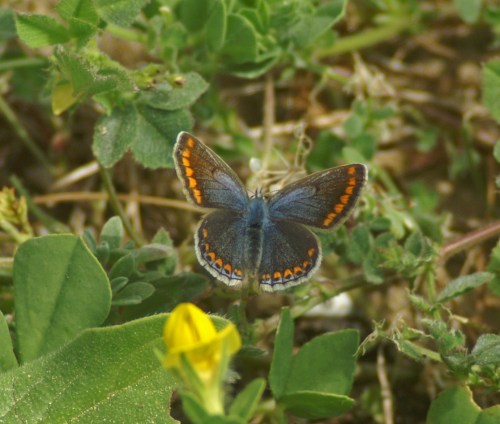


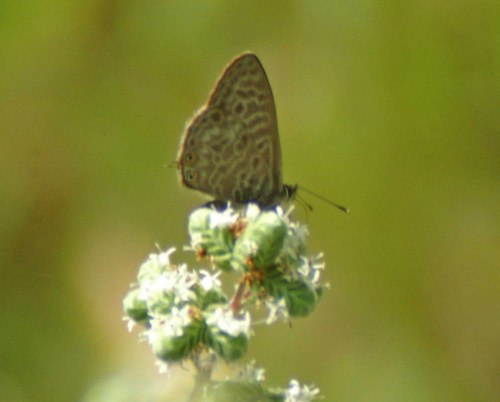












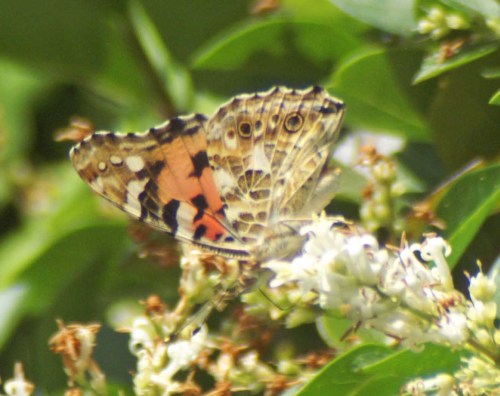
















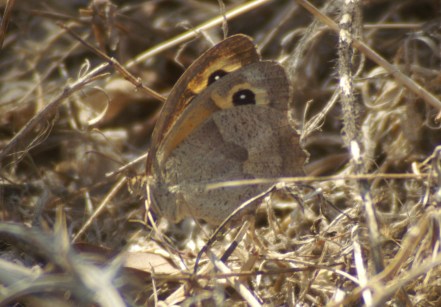












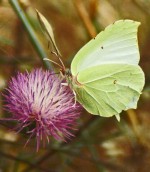



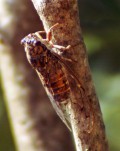



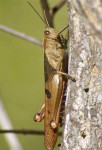
You’ve got some lovely fritillary shots in there! I’m looking forward to seeing your list grow. Good luck.
LikeLike
Oh, that was an amazing variety of butterflies. Nice!
LikeLike
Thank you very much, Southern Spain is a wonderful place for butterflies!
LikeLike
According to Tristan Lanfranchis’s book on Butterflies of Europe the scarce swallowtail is not found in southern Spain but instead it is the Spanish swallowtail (Iphiclides feisthamelii) -very similar to the scarce swallowtail.
LikeLike
Beautiful images!
LikeLike
Thank you Kay,
I have enjoyed taking them, this part of the world is a wonderful place to find them.
LikeLike
Good collection of photos. Thanks for sharing them.
LikeLike
Thank you, the butterflies are beautiful subjects to photograph and there are just so many species in this part of Spain. I still have some images to add that I haven’t properly identified yet.
LikeLike
A splendid site. Thank you. Wondered if you could help as I couldn’t find the butterfly I’ve just seen on your list. I saw it feeding on buddleia today (21 September) near Zagra which is inland Granada province. It has wingspan of about 6 cm – slightly smaller than a swallowtail, light brown with small brown/black spots on upper wings and a distinctive lime green underside to the hind wing. Fore wing underside was brown. Overall colour in flight is a reddish brown.
Here’s hoping you can help!
LikeLike
Thank you for your comment Kath – the only largish butterfly I can think of that comes close to your description is the Cardinal Fritillary. The species is on my list and everything you say matches, but perhaps the one I photographed, (which just would not oblige with a more definitive pose!) may have been an older and a more faded specimen. If your sighting was of a ‘fresh one’ the undersides could well have been more brightly green than my one. Lucky you to have seen it!
LikeLike
It’s November here in Central Portugal with lots of rainy days followed by a week or so of warm, cloudless days and plenty of sun. Lots of flowers still blooming – lantana, small lillies, etc. My husband stood and watched a green butterfly feeding on purple convulvulus but did not have a camera; he describes it as “larger than a cabbage white with leaf-green outer wings with a yellow curved flash on the lower wing”. I cannot ID it; doesn’t look like any photos of green or other hairstreaks. Ideas???
LikeLike
Sounds like a lovely place to be! The butterfly you describe was almost certainly one of my favourites- a gorgeous Cleopatra, which is very similar in size and shape to a Brimstone. The underside of the fresh ones is often very green and leaf-like. They don’t tend to open their wings when resting or feeding, but when they fly the females wings show whitish with maybe a touch of orange on the hindwing. Males are yellow above with a bright orange patch.
LikeLike
Thank you for the wonderful photos. Using them we identified an amazing black and white butterfly on the lavender in our garden in the French Alps. It was the Scarce Swallowtail – and not scarce here as we had several feeding at the same time!
LikeLike
I’m envious, that must have been a lovely sight! Glad to hear you found the info on my blog useful, thanks for letting me know. Best wishes
LikeLike
Hi there
I am a South African travelling around Corfu and Paxos islands and have found your site very useful in identifying butterflies that are similar to ours but a bit different.
Thank you!
Elspeth
LikeLiked by 1 person
Hi Elspeth, Happy to learn you’ve found useful info here, many thanks for letting me know. Sounds like an amazing trip you’re taking, enjoy! Best wishes, Theresa
LikeLike
I found your website after seeing two monarch butterflies chasing each other around my balcony. I wanted to know how long they lived for. I have seen a few of your listed butterflies and hope to see many more. Thank you for all your interesting information.
I am in the region of Murcia.
LikeLike
Thank you for helping me to identify a Small Copper, one of the amazing variety of butterflies visiting our land in Sardinia. I am a total novice obviously!
LikeLiked by 1 person
One of my very favourite butterflies! We were all novices once – you’ll soon get to know them and what a lovely place to see them and learn!
LikeLike